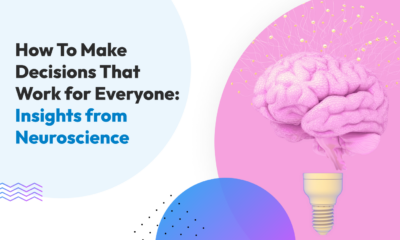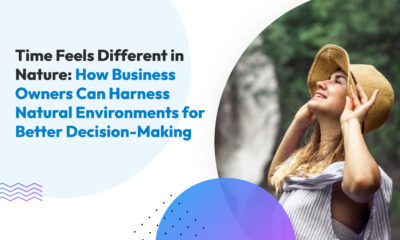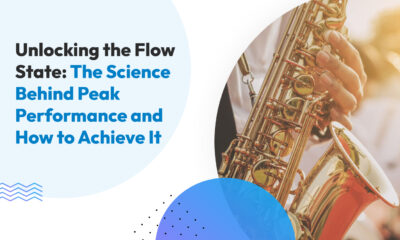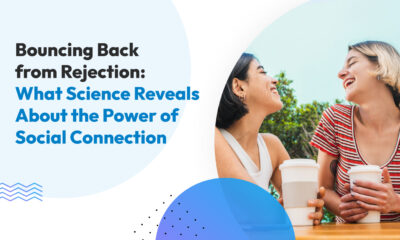Science Says
The Memory Game: What Science Tells Us About Making Information Stick
Picture this. You’re sitting across a potential client you met at a networking event last month. You remember the emotional conversation about their business challenges. But as they ask, ‘So what were your thoughts about the pricing structure we discussed?’ your mind goes completely blank.
Did they show you their website? Or a snapshot of their sales analytics? You remember the connection you felt, the general topic of your conversation, but the specific details? Gone.
As business owners and freelancers, we rely heavily on our ability to remember important details from many different aspects of our business, and from the briefest encounters – from client preferences to project specifications, from pricing agreements to process workflows. But science reveals that our memory (specifically visual memory) doesn’t always work the way we think.
This study from Rice University explores the relationship between memorable images, emotion, the passage of time, and our ability to remember details, especially on very similar-looking visual content. Read on to understand the science of visual memory and how we can create images and graphics for our clients, other stakeholders, and even ourselves that are easy to remember.

The Science Behind Memorable Images
Ever notice how some images just stick in your mind while others fade away almost instantly? It’s not just you. Research shows that certain types of images are consistently more memorable across different people, regardless of their personal preferences or backgrounds.
What makes an image memorable? Scientists have identified several key characteristics:
- Images with people in them tend to be more memorable than landscapes or objects alone.
- Clear, uncluttered compositions stick better than busy, complex ones. Your brain can process and store simpler visual information more efficiently.
- Colorful images typically outperform monochrome ones in memory tests. That vibrant photo you took on vacation is more likely to stick than the grayscale business chart.
- Unusual or unexpected content grabs attention and lodges in memory. A dog riding a skateboard is more memorable than a dog walking on a leash.
- Emotion-evoking images – whether they make you laugh, feel disgusted, or trigger fear – are particularly sticky in our minds.
Because of these characteristics that contribute to the intrinsic memorability of images, scientists are able to use artificial intelligence (trained on thousands of human responses, although mostly US-based) to predict and score image memorability. These AI tools analyze visual features like color, composition, and content to estimate how likely an image is to be remembered by humans.
Action Item: Experts on visual media have been using these principles for decades, but the applications aren’t just for advertising or social media posts. When creating your portfolio website, include photos of yourself working with clients rather than just work samples. For client presentations, use clear, uncluttered slides with meaningful imagery rather than text-heavy information dumps.
You can make this work for yourself as well. You can incorporate these visual characteristics for your notes, your goals, or important reminders that you want to commit to memory.
The 24-Hour Memory Window
So the good news is that we have a general formula for how to make memorable visual content. The bad news? Well, the memorability impact fades after a day.
In the experiment they did for this study, they purposely tested how well the ‘high memorability’ images were retained after a delay. Previous experiments had just tested recall after a few minutes (between 5 and 40). It turns out there was no significant difference in image recognition between memorable and forgettable images after a day had passed. The memorability advantage mostly disappears after 24 hours.
Action Item: This finding challenges how we typically think about creating “memorable” content. Instead of focusing solely on making something unforgettable, we need to think about the timing of our communications and build in strategic reinforcement.
For example, if you’re a web designer presenting concepts to a client, don’t rely on them remembering your brilliant ideas from a single presentation. Send a follow-up email within 24 hours that reinforces your key points. If you’re running a social media campaign, plan for a reminder sequence within that critical first day, then schedule regular reinforcement.
The same applies to your own learning and information management. That conference you attended? Those brilliant ideas won’t stick unless you review your notes within 24 hours. The tutorial you watched? Practice the skills immediately, or they’ll fade faster than you expect.

The Emotion Puzzle
We all know emotional experiences (and images!) tend to stick with us. But the research reveals a fascinating trade-off: emotional content enhances memory of the main message but can reduce memory of specific details.
This explains why you might remember the excitement of a client meeting but forget the exact project specifications they mentioned. Or why you recall the general impression of a webinar but can’t remember the specific steps in the process they taught.
This gist-versus-detail trade-off increases as time passes. The emotional core of an experience becomes more dominant in our memory while the peripheral details fade away.
Action Item: Use emotional content when you need immediate impact and recognition, like in your brand storytelling, initial pitches, or when you need a quick response. A web designer might use emotionally compelling before-and-after stories when first connecting with potential clients. A consultant might open a presentation with an emotionally resonant client success story.
But here’s the key: emotional content should focus on core messages only. Don’t expect clients to remember the pricing details from an emotionally charged presentation.
The Power of “Boring”
The most surprising finding of this study is that forgettable, non-emotional images were better remembered for their details than memorable, emotional images after a time delay. Think of a family portrait filled with happy smiles, and then imagine another picture of someone’s computer desktop showing all their frequently used apps and shortcuts.
The research suggests we are more likely to remember what apps were on the desktop snapshot than what color shoes someone was wearing in the family photo. Researchers think the very reason some images are memorable is because a central element stands out and overwhelms any peripheral details. So we may pick up on and retain more specifics in a boring image because our focus is not pulled into the central theme of a memorable picture.
Action Item: This counterintuitive finding has huge implications for how we present business information. When you need people to remember specific details – like pricing, technical specifications, or process steps – neutral, straightforward formats work best.
For example:
- Keep your service agreements and contracts in clean, neutral formats
- Present pricing information separately from your emotional brand story
- Create technical documentation with clear, emotion-free language and visuals
- Develop standard operating procedures with straightforward, neutral formatting
This applies to your own note-taking and information management, too. For your business planning, client details, and project specifications, a neutral, “forgettable” aesthetic might actually help you remember the important details better than a visually exciting format.
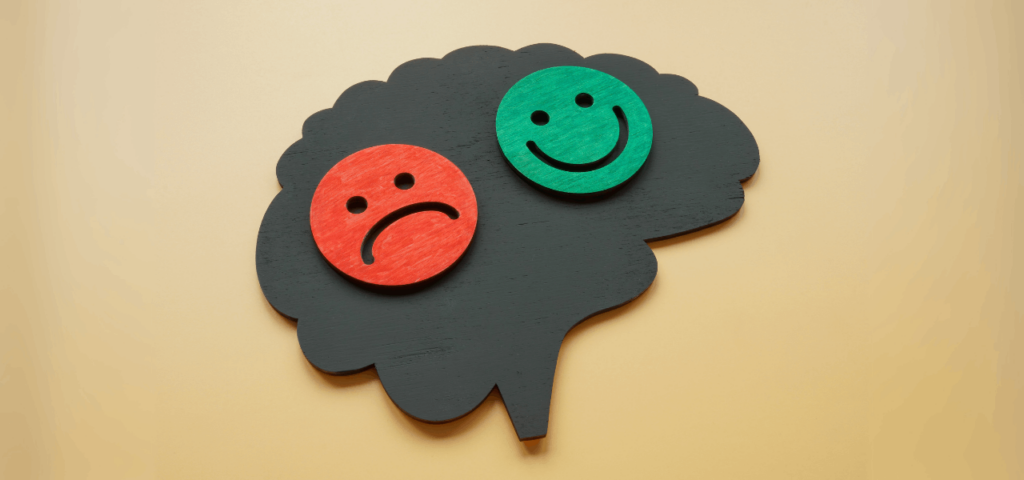
Positive or Negative Images and Detail Retention
If neutral, forgettable is best for testing recall of finer details, how about positive or negative images?
Based on this study’s experiment results, memorable positive images were better remembered for their details than forgettable positive images. Negative images though, whether forgettable or memorable, turned out hardest to tell apart after a day. This was unexpected because previous research showed that both positive and negative emotional images typically show similar patterns.
There are different theories about why positive or negative emotions in an image can cause us to remember details differently. Some say positive emotions make you notice more things (broadens attention). There is also a notion that positive information is processed faster. On the other hand, some say negative emotions make you focus on fewer things (narrows attention). The “weapon focus effect” is an example of this, when people remember a weapon (negative) in an image very clearly but forget other details around it.
While the authors of this study observed better detailed recollection of positive memorable images after 24 hours, they’re being cautious about drawing firm conclusions because this finding doesn’t align perfectly with previous research, and there could be other factors at play.
Action Item: Perhaps a good application of these seemingly conflicting findings is to conduct your own A/B testing when using visual content – will a graphic depicting your client’s pain point elicit better recall of your main message and some detailed info than an image of them enjoying the benefits your services promise? Will the finer points of your social media campaign be more memorable using pictures depicting contentment or humor than one triggering fear or a scarcity mindset?
Limitations of the Study
As we focus on the actionable takeaways from this study, it’s worth noting some limitations. First, the measure of memorability has largely been based on responses of individuals based in the US, so some ideas may not be generalizable to other cultural contexts.
The study primarily focused on immediate and 24-hour recall, so we don’t know as much about longer-term memory effects. Additionally, the research used specific types of images and memory tests, so results might vary with different content types or real-world applications.
Lastly, the study also had a relatively small sample size, particularly for the 24-hour delay group, which means some of the more subtle effects of memorability, emotion, and time delay on basic recall and detailed memory might not have been detected.
Wrap Up
The study’s findings on how emotion and memorability interact offer valuable insights for improving communication and memory retention. Think of all the areas in your business where visual material is used. Beyond marketing content and other external communication, onboarding training, standard operating procedures and other internal communication can benefit from these ideas of how to make the right information stick. And don’t forget about that crucial 24-hour window – it’s your sweet spot for reinforcing important messages, as we easily forget visual content within a day!
Another promising direction is integrating these insights into emerging technologies like AI-powered content creation tools. By using algorithms that predict image memorability you could automate the process of creating more effective visual content. This fusion of psychology and technology could enhance how we design marketing campaigns, educational materials, and even personal productivity systems.



